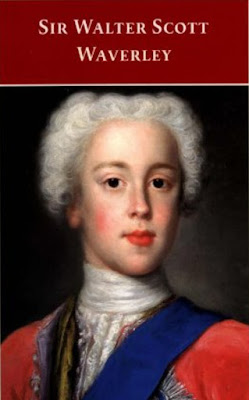A HISTORY OF
AMERICAN LITERATURE
SINCE 1870
BY
FRED LEWIS PATTEE
Professor of the English Language and Literature in the Pennsylvania
State College. Author of "A History of American Literature,"
"The Poems of Philip Freneau," "The Foundations of
English Literature," etc.

D. APPLETON-CENTURY COMPANY
INCORPORATED
NEW YORK LONDON
Copyright, 1915, by
The Century Co.
ALL RIGHTS RESERVED, INCLUDING THE
RIGHT TO REPRODUCE THIS BOOK, OR
PORTIONS THEREOF, IN ANY FORM.
PRINTED IN U. S. A
TO DARTMOUTH COLLEGE AND THE DARTMOUTH MEN OF THE EIGHTIES, STUDENTS AND PROFESSORS, AMONG WHOM I FIRST AWOKE TO THE MEANING OF LITERATURE AND OF LIFE, THIS BOOK IS INSCRIBED WITH FULL HEART.
American literature in the larger sense of the term began with Irving, and, if we count The Sketch Book as the beginning, the centennial year of its birth is yet four years hence. It has been a custom, especially among the writers of text-books, to divide this century into periods, and all have agreed at one point: in the mid-thirties undoubtedly there began a new and distinct literary movement. The names given to this new age, which corresponded in a general way with the Victorian Era in England, have been various. It has been called the Age of Emerson, the Transcendental Period, the National Period, the Central Period. National it certainly was not, but among the other names there is little choice. Just as with the Victorian Era in England, not much has been said as to when the period ended. There has been no official closing, though it has been long evident that all the forces that brought it about have long since expended themselves and that a distinctively new period has not only begun but has already quite run its course.
It has been our object to determine this new period and to study its distinguishing characteristics. We have divided the literary history of the century into three periods, denominating them as the Knickerbocker Period, the New England Period, and the National Period, and we have made the last to begin shortly after the close of the Civil War with those new forces and new ideals and broadened views that grew out of that mighty struggle.
The field is a new one: no other book and no chapter of a book has ever attempted to handle it as a unit. It is an important one: it is our first really national period, all-American, autochthonic. It was not until after the war that our writers ceased to imitate and looked to their own land for material and inspiration. The amount of its literary product has been amazing. There have been single years in which have been turned out more volumes than were produced during all of the Knickerbocker Period. The quality of this output has been uniformly high. In 1902 a writer in Harper's Weekly while reviewing a book by Stockton dared even to say: "He belonged to that great period between 1870 and 1890 which is as yet the greatest in our literary history, whatever the greatness of any future time may be." The statement is strong, but it is true. Despite Lowell's statement, it was not until after the Civil War that America achieved in any degree her literary independence. One can say of the period what one may not say of earlier periods, that the great mass of its writings could have been produced nowhere else but in the United States. They are redolent of the new spirit of America: they are American literature.
In our study of this new national period we have considered only those authors who did their first distinctive work before 1892. Of that large group of writers born after the beginning of the period and borne into their work by forces that had little connection with the great primal impulses that came from the Civil War and the expansion period that followed, we have said nothing. We have given the names of a few of them at the close of chapter 17, but their work does not concern our study. We have limited ourselves also by centering our attention upon the three literary forms, poetry, fiction, and the essay. History we have neglected largely for the reasons given at the opening of chapter 18, and the drama for the reason that before 1892 there was produced no American drama of any literary value.
We would express here our thanks to the many librarians and assistants who have cooperated toward the making of the book possible, and especially would we tender our thanks to Professor R. W. Conover of the Kansas Agricultural College who helped to prepare the index.
F. L. P.
State College, Pennsylvania,
CHAPTER PAGE
I THE SECOND DISCOVERY OF AMERICA 3
II THE LAUGHTER OF THE WEST 25
III MARK TWAIN 45
IV BRET HARTE 63
V THE DISCOVERY OF PIKE COUNTY 83
VI JOAQUIN MILLER 99
VII THE TRANSITION POETS 116
VIII RISE OF THE NATURE WRITERS 137
IX WALT WHITMAN 163
X THE CLASSICAL REACTION 186
XI RECORDERS OF THE NEW ENGLAND DECLINE 220
XII THE NEW ROMANCE 244
XIII LATER POETS OF THE SOUTH 271
XIV THE ERA OF SOUTHERN THEMES AND WRITERS 294
XV THE LATER POETS 321
XVI THE TRIUMPH OF THE SHORT STORY 355
XVII SHIFTING CURRENTS OF FICTION 385
XVIII THE ESSAYISTS 416
INDEX 441
The PDF might take a minute to load. Or, click to download PDF.
If your Web browser is not configured to display PDF files.
No worries, just click here to download the PDF file.



.jpg)
_-_Sir_Walter_Scott_(1771-1832)_-_RCIN_400644_-_Royal_Collection.jpg)

.jpg)



